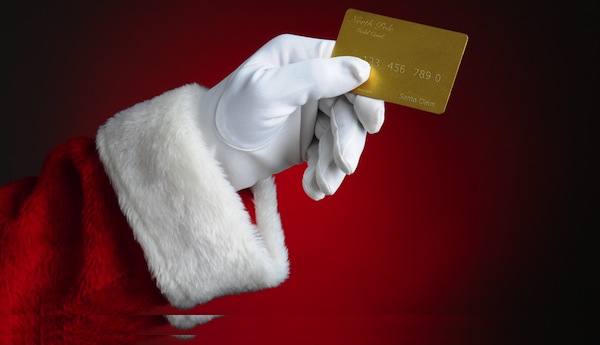After the festive season wrapped up, many Australians are left with more than just leftover pudding and fond memories. The aftermath of Christmas cheer has, for some, translated into a financial hangover that’s hard to shake off.
The latest figures from the Reserve Bank of Australia paint a stark picture of the nation’s spending habits, revealing a record-breaking splurge on credit cards during the December period.
You May Like
The convenience of plastic can be all too tempting when the holiday spirit takes over, and the numbers are telling: a staggering $28.1 billion was charged to credit cards, with a significant $17.8 billion now accruing interest.
The situation is compounded by the fact that, according to Canstar’s analysis, debt accruing interest on personal credit cards has risen by over $236 million from November and a worrying half a billion dollars from the previous year.
Sally Tindall, Canstar’s data insights director, attributes this rise to pre-Christmas spending amidst a cost of living crisis.
‘With the value of credit card transactions also hitting a record high in December, the national addiction to credit card debt is likely to get worse, before it gets better,’ she said.

But it’s not all doom and gloom. There are strategies to avoid falling into this debt trap or to climb out if you’re already in it.
- Stop debt from growing: This might mean ‘taking the scissors to the card’ to prevent further spending. It’s a drastic measure, but sometimes necessary to halt the cycle of debt.
- Consider switching your balance to a personal loan: For those who have already accumulated debt, the average credit card interest rate of 18.59 per cent—the highest on record since the RBA began tracking in 2019—can make repayment seem like an uphill battle.
‘If you’ve got a mountain of credit card debt, and a rubber arm when it comes to spending at the shops, consider getting off the revolving debt treadmill by switching your balance to a personal loan,’ Canstar suggests.
- Switch your card: Another option is to switch to a credit card with a lower interest rate. Some providers offer cards with rates under 10 per cent, which can make a significant difference in how quickly you can pay down your debt.
Additionally, zero per cent balance transfer credit cards are an attractive option, offering interest-free periods of up to 30 months. But be wary—these cards can come with pitfalls, such as high interest rates after the introductory period, that can catch you out if you’re not diligent.
- Practice planning and discipline: The key to avoiding or escaping the Christmas debt trap lies in planning and discipline. Before the next festive season rolls around, consider setting a realistic budget and sticking to it.
Save throughout the year for Christmas expenses to avoid relying on credit when December arrives. And if you’re already facing a mountain of debt, take control now by assessing your options and creating a repayment plan that works for you.
Remember, the joy of the holiday season shouldn’t be overshadowed by financial stress. With careful planning and smart financial choices, you can enjoy the festivities without the burden of a debt hangover.
Share your experiences and tips for managing holiday spending in the comments below—your advice could help a fellow YourLifeChoices reader avoid the Christmas debt trap.
Also read: Simple habits that can boost your retirement confidence


Oh, Credit/Debit Card usage has increased, WOW, who would think.
Maybe it is because most banks are trying to force everyone into Electronic Payments/Transactions, the use of Credit/Debit Cards above and replacing the use of CASH.
In some instances they have made it almost impossible or expensive to obtain Cash, NO local ATM’s or there are the Privately Owned ATM’s with high withdrawal fees, or the nearest Bank/Post Office/ATM is 10/20/30/40/50 Km, or more, away.
And this is everyday, not just after Christmas / New Year.